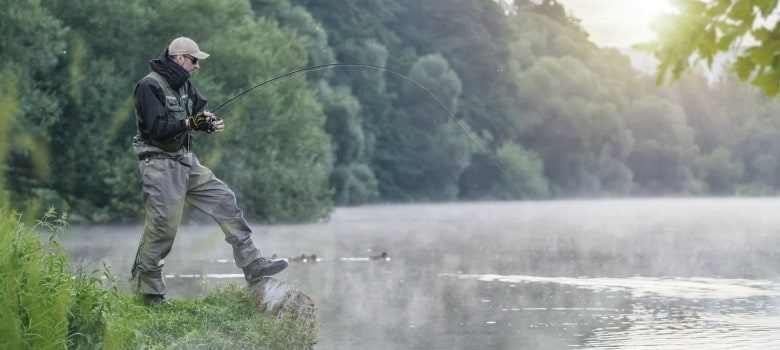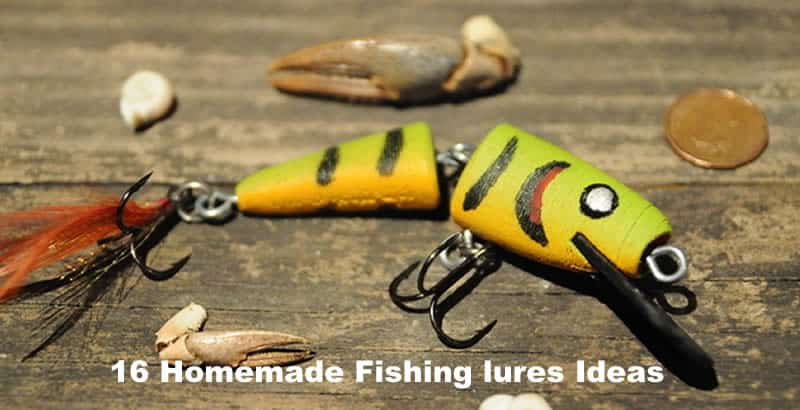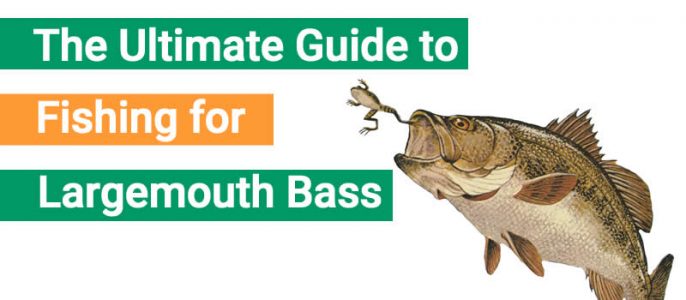If you buy via a link on this page, we may receive a commission, at no extra cost to you.Learn more
Having the right gear alone is not enough to catch fish. Don’t get me wrong. It is helpful to have the right equipment. But your movements and actions are equally important, especially when the fish start biting!
You will be surprised to know that the reason most beginners lose fish is that they don’t know how to tell if the fish is biting. That’s why I’m going to share some tips on how to detect fish bites. It all comes down to looking at the following:
- Rod movement
- Line vibration
- Water ripples
- Water surface
Keep in mind that several of these will occur at the same time. For example, a fish will bite the lure or bait, thus creating movement and tension on the line.

The next movement is to set the hook once you detect a bite. So, stay with us a little longer to know how and when to set the hook.
Feeling the Weight
Knowing how much your rig weighs is crucial to catch fish. This was my very second step after learning how to cast. Why? Well, getting used to it helped me in detecting any changes on the line.
That’s why I recommend the following drill. Leave the lure hanging two inches from the ground. Move the rod up and down to get a hold of the weight.
Try to cast the rod if you have the space. Slowly reel the line and feel the resistance without fish. Although simple, this drill will help you to notice any tension/weight changes on your line.
How a Fish Bite Feels
One thing that you should know is that not all bites are the same. For instance, how aggressive the bite is depends on the fish, bait, and even the season.
In my experience, fish become lethargic when the water temperature is too low. They won’t bite as aggressively as a result. You will only notice some tension and subtle vibrations on the line and rod. In contrast, their bite will come with force during breeding seasons. Thus, easier to detect.
Fishes of different species will have a unique reaction to the lure. For example, bass tends to be more aggressive than trout. It will be easier to tell when a bass is biting because there will be an instant bend on the rod’s tip.
I’ve also noticed that even the lure plays a role. For example, the tension after a bite is very noticeable when working crankbaits and top water lures.
The way of detecting bites is the same regardless of how aggressive the bite is. Let’s explore them.
Rod Movement
For me, the rod is an extension of my arm. But that’s because I’ve been fishing for far too long. But I understand it might be tricky to detect the vibrations at first.
Keep your attention centered at the tip. This will be the first section moving after a bite, even if it is subtle. You should also be able to feel some vibrations on the reel seat shortly after.
Naturally, the bend will be more or less noticeable depending on the fish and rod action.
Line Movement
Just like the rod tip, the line will also vibrate as the fish bites the bait. You might notice that it tightens a little due to the weight of the fish. Sometimes the line pulls away as the fish swims with the lure!
I used to add a bobber when I started fishing. It helps me to detect bites as it is easier to see than the line itself. However, I no longer use it as I have learned to spot the line movements.
Using a colored line might be useful too, especially if it is a sunny day.
One technique I picked up with time is using my index finger to feel the line. I push it down as a guitar string. This allows me to feel even the tiniest nibbles.
Yeah. I know. The line also tightens when the hook gets caught in the weeds. However, this is easy to distinguish from a bite as the tension is always constant and the lack of vibrations.
Water Ripples
I’ve noticed that sometimes the fish disturbs the water as it bites the lure. The vibrations travel from the hook to the line, thus disrupting the surface. The fish might also hit and swim quickly, which will also cause ripples in the water.
It might not be a strong sign on its own. But it might confirm that a fish is biting if you also feel the vibrations on the rod or a pull on the line.
Looking At the Surface
Sometimes it is as simple as looking at the water’s surface. You might notice the fish approaching the bait. Naturally, this depends on the water clarity.
I don’t take my eye away from the surface when working a topwater lure. It helps me to adjust the retrieving speed if I notice that a fish is interested in it.
How to Set the Hook
Setting the hook is the next step after detecting that a fish is biting. It is crucial to time it perfectly. You will definitely lose the fish if you are too early or too late.
One common mistake is to jank the rod as soon as you feel some tension on the line. Usually, this ends up with you missing the catch. Let’s explore when and how to set the hook depending on the lure you are using.
Deep Fishing
I’ve seen anglers moving the rod as soon as they see the rod’s tip moving. However, I encourage you to let the fish swim away with the bait for some time. A couple of seconds should be enough. This will also give you time to engage the reel and for the fish to close its mouth.
The key for setting the hook here is to square your stance and pull the rod back in a single movement.
Moving Baits
Setting the hook while using crankbait or topwater lures is different in its own right. Initially, I used to cease the retrieve and only pull the rod back. Sadly, this is what you should not do!
Stopping the lure will only create slack on the line, making the fish more likely to spit it.
That’s why you should keep the lure moving and pull the rod simultaneously. There will be no slack on the line. Plus, the fish won’t have time to spit the hook.
Should I Lower my Rod’s Tip Before Setting the Hook?
If you’ve ever seen a pro angler fishing, you might have noticed they lower the tip of the rod. What you might have missed is that they reel the line simultaneously. This way, they ensure there is no slack on the line, increasing the effectiveness of the hookset.
In a nutshell, yes. You can lower the rod’s tip. Just make sure that there is no slack on the line.
Why Are Fish Not Getting Hooked?
It is so frustrating when fish keep biting but don’t get hooked. It happens way too often, especially when the lake is full of nuisance fish. Some of the reasons fish don’t stay hooked are:
- Test bite
- Incorrect hook size
- Too much slack on the line
So, make sure to check the tension on the line and the rod movement as a countermeasure. Set the hook only after a couple of seconds of constant tension and movement. Sometimes some fish just bite and move away as a test. If you pull the rod as soon as you feel the first bite, you will scare all the nearby fish.
Additionally, make sure the line is tight with no slack.
Final Thoughts
Attention is all you need to know if fish are biting. Don’t worry. It gets easier with time. Just keep an eye on the rod’s tip. This is the first section bending under pressure.
Use your index finger to feel the tension on the line. Is it constant? Do you feel vibrations? Do you see the line pulling away? These are all telltales that there is something at the other end.
Paying close attention to the water’s surface is also a good approach. You will notice small disruptions in the water surface as the fish approaches the bait. You might even get to see it if the water is clear enough!




